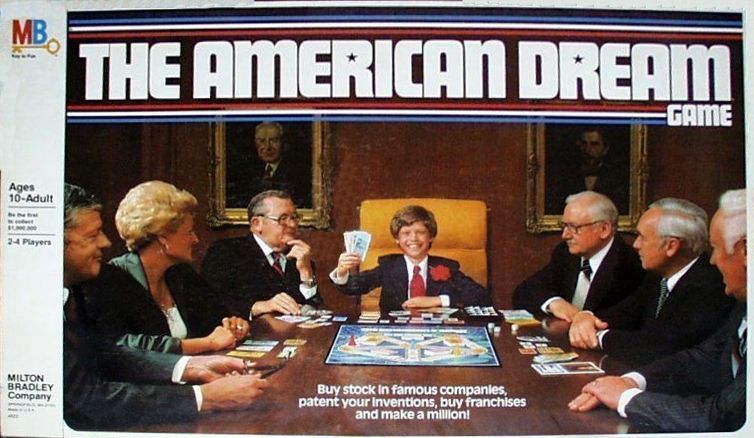The American Dream Game (1979) Board Game
The American Dream Game was released in 1979 by Milton Bradley. It is a classic board game that focuses on economic and negotiation elements, allowing players to experience the ups and downs of the American economy.
Game Components of The American Dream Game
How To Setup The American Dream Game
To set up the game, each player selects a pawn and places it on the “Imagination” space. Players separate the cards by type, shuffle them, and place them on the appropriate spaces on the board. Each player receives $50,000 (2-$5,000 and 4-$10,000), one Prudential insurance card, one experience card, two American Dream cards, and a salary recorder. The salary recorder is set to $10,000. Players roll one die to determine who goes first, and play proceeds clockwise.
Gameplay Mechanics and Game Objective
Objective
Mechanics
Player Experience
The game offers a mix of strategy and luck, with players needing to navigate the board strategically while also dealing with random events. The flexibility in rolling dice and using experience cards gives players a sense of control, but the reliance on luck can be frustrating. The game is filled with real-world branding, making it more realistic but also somewhat annoying due to the constant advertising.
Pros
Cons
Personal Thoughts on The American Dream Game
The American Dream Game is for those who enjoy business-themed games with a mix of strategy and luck. It is particularly suited for players looking for a game that offers more flexibility than Monopoly but may not appeal to those seeking a purely strategic experience. The game’s theme and mechanics make it an interesting, if not perfect, addition to any board game collection.
We are supported by our audience. When you purchase through links on our site, we may earn an affiliate commission, at no extra cost for you. Learn more.

